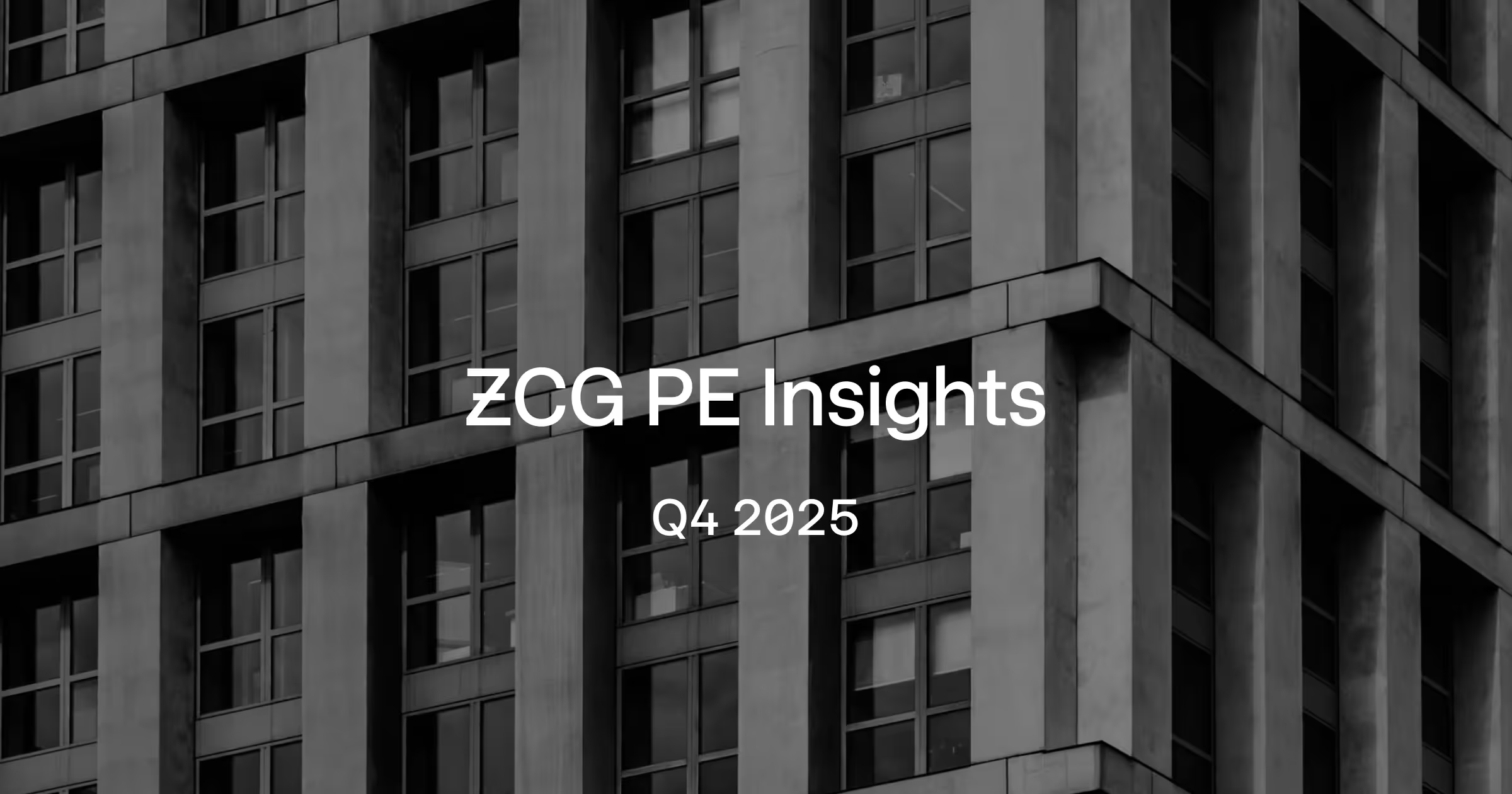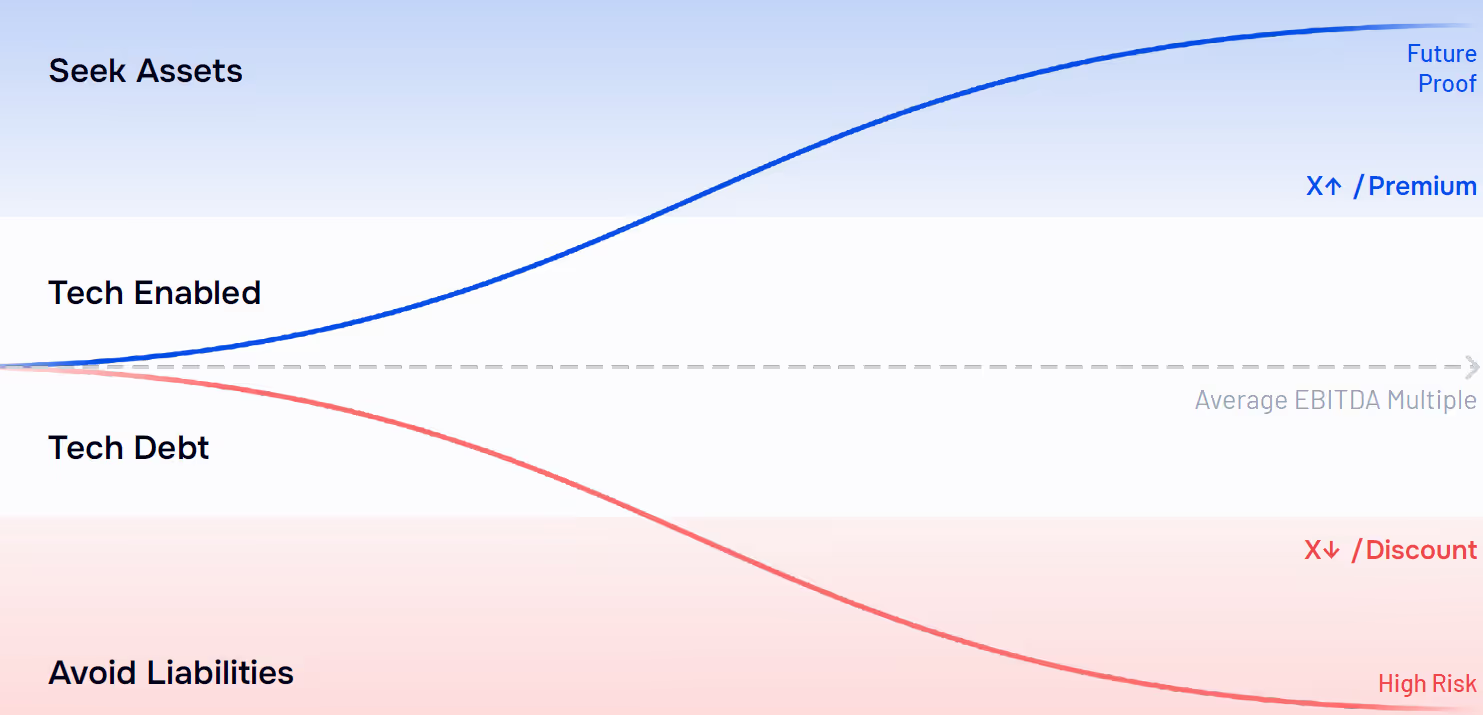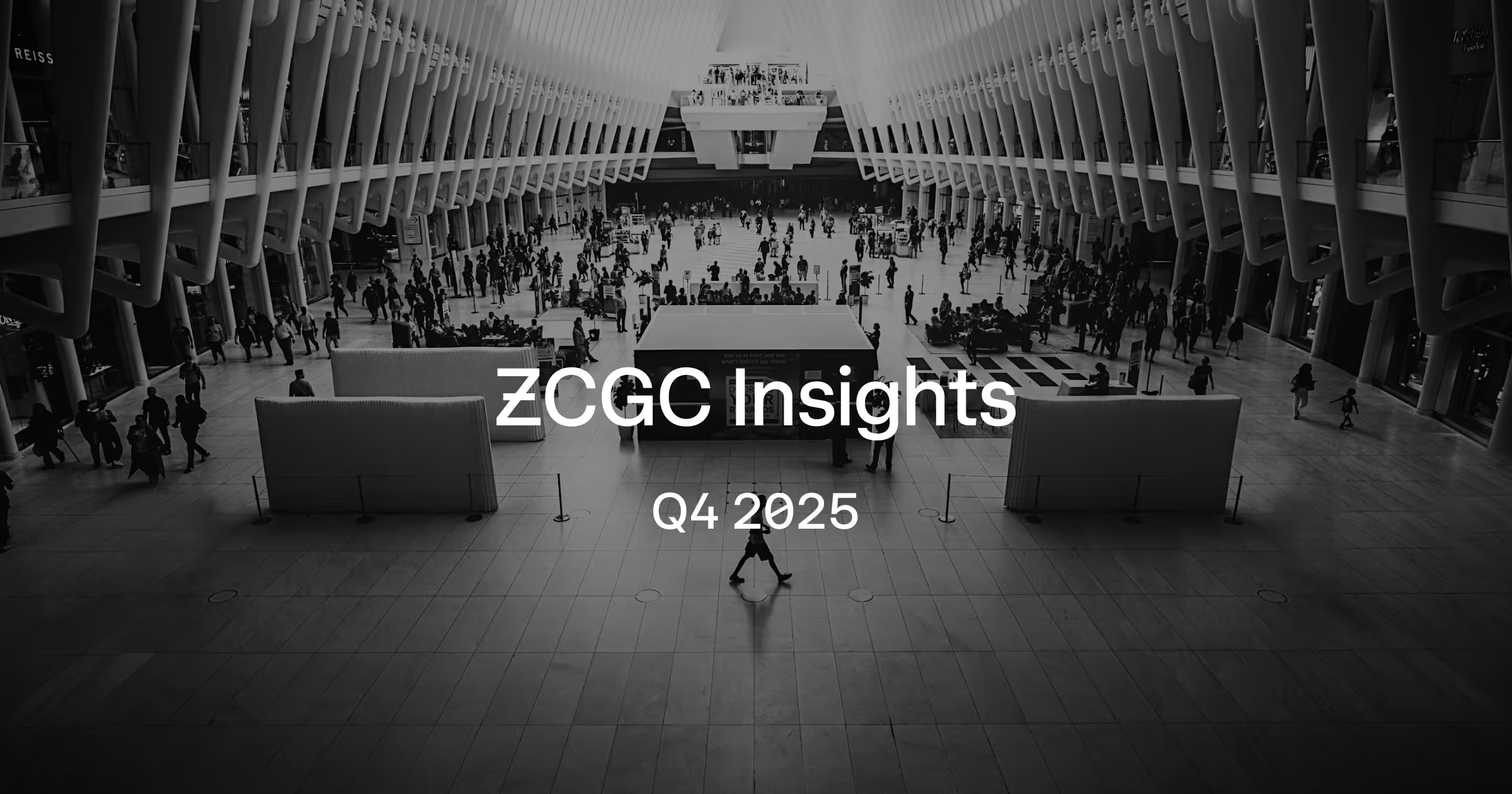
ZCG PE Insights: AI Transformation and the Impact of Technical Debt
ZCG PE Insights: AI Transformation and the Impact of Technical Debt
Technical Debt: A Drag on PE Returns
Legacy technology, siloed data, and manual operations create hidden liabilities that undermine acquisition success. These inefficiencies slow integration, drain resources, and extend timelines, making thorough due diligence essential. Identifying tech debt early helps to avoid costly surprises, as unaddressed issues can consume significant time and capital, derail value creation and increasing investment risk.
In healthcare, for example, tech debt can consume up to 40% of IT budgets, diverting funds from growth and value creation initiatives. This underscores the importance of robust pre-deal technology assessments to uncover vulnerabilities in software and infrastructure (2).
Upgrading technology upgrades post-acquisition, such as adding AI analytics, automation, and workflow modernization, can transform technical debt into a value-creating asset. Companies with modern, tech-enabled systems command premium valuations, while those burdened by legacy infrastructure often face discounts.
Nearly 71% of PE firms invested in digital transformation in 2024, and 67% prioritized AI, reinforcing that technology enablement is now essential for maintaining competitiveness (3).
Figure 1: U.S. Private Equity Exit Trends (in Years) (1)

AI Helps at the Portfolio Company Level
AI is reshaping how portfolio companies optimize operations, manage costs, and drive growth.
Operational Optimization
Portfolio companies are leveraging AI to production planning, dynamic pricing, and inventory management. Machine learning models help streamline schedules, reduce waste, and balance inventory, preventing both stockouts and overproduction.
In pricing, AI-driven algorithms adjust dynamically to customer behavior, competitor actions, and market conditions, maximizing top-line growth and margin expansion (5). Inventory optimization further enhances working-capital efficiency and reduce carrying costs, a key advantage industry with complex supply chains or high input costs (6).
Customer Engagement and Growth
AI is also transforming customer engagement and marketing strategy. Predictive analytics and segmentation models identify high-value customer cohorts and tailor campaigns to their preferences (7). Generative AI enables personalized content on a scale, improving conversion rates, retention, and overall customer lifetime value.
By focusing resources on the most promising leads, companies reduce acquisition costs while accelerating top-line growth. These enhancements strengthen both the customer value proposition and the growth narrative at exit.
Execution and Efficiency
Beyond growth, AI reduces repetitive workloads and accelerates execution. Intelligent automation handles routine, rules-based processes, freeing employees to focus on higher-value initiatives.
AI-powered dashboards aggregate data across systems, delivering real-time insights and actionable recommendations. This enhances decision-making, lowers costs, and supports scalability, helping portfolio companies achieve faster, more resilient value creation throughout the investment lifecycle.
Figure 2: Future-Built vs. Laggards: The ROI of AI and IT Investment(4)

AI Powered Strategies at the Sponsor Level
At the portfolio company level, AI is also revolutionizing how private equity and private credit firms source, evaluate, and execute investments. Beyond automation, AI delivers intelligence augmentation, enhancing the analytical depth and relational understanding behind successful dealmaking.
Enhances Due Diligence and Analysis
AI tools can rapidly synthesize large datasets that would traditionally take analysts weeks to process. Machine learning models detect anomalies in financials and benchmark performance against peer sets.
Natural language processing (NLP) extracts insights from management presentations, filings, and transcripts, surfacing sentiment and risk signals that might otherwise go unnoticed. This doesn’t replace human judgment, its refines it, enabling sponsors to make faster, more confident investment decisions with a fuller understanding of risk-adjusted value.
At ZCG, with the support of our technology affiliate Haptiq, we use an AI platform that integrates macro- and micro-level analysis to generate nuanced views on industries and individual credit quality.
Relationship Intelligence
Equally transformative is AI-driven relationship mapping. By analyzing CRM data, contact lists, meeting notes, and external sources such as LinkedIn or media mentions, AI can construct sophisticated network graphs that reveal the strength and depth of connections.
Sponsors can identify the most efficient path to management teams, limited partners, or co-investors; track sentiment across engagements; and uncover where relationship capital is under- or over-leveraged.
This intelligence provides a competitive advantage not just in finding opportunities, but in winning them.
The Next Frontier: Converging Intelligence
As AI systems continue to learn from firm-specific data, the integration of analytical and relational intelligence will define institutional advantage.
The next wave of alpha generation may come not just from better models or data, but from the fusion of quantitative insight and relational depth, powered by intelligent systems designed to think and connect as dynamically as their human counterparts.
Sources
1 Haptiq
2 AlixPartners (https://www.alixpartners.com/insights/102l0c1/tackling-tech-debt-unlocking-value-in-healthcare-portfolio-companies/)
3 PwC (https://www.pwc.dk/da/publikationer/2025/pwc-private-equity-trend-report-2025-final.pdf)
4 BCG (https://media-publications.bcg.com/The-Widening-AI-Value-Gap-Sept-2025.pdf)
5 Lumenalta (https://lumenalta.com/insights/ai-in-private-equity:-portfolio-management-to-value-creation)
7 BDO (https://www.bdo.com/insights/industries/private-equity/ai-use-case-portfolio-for-private-equity)



